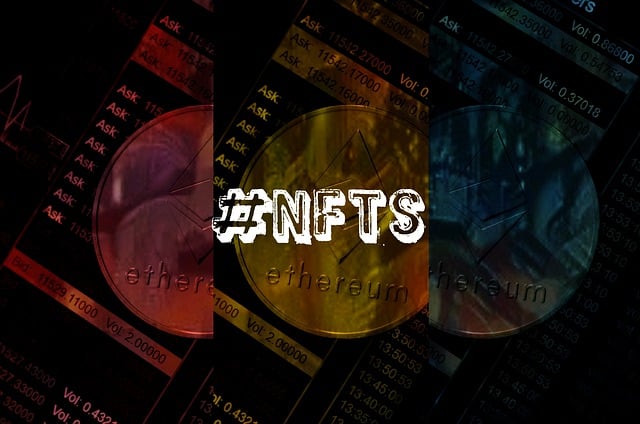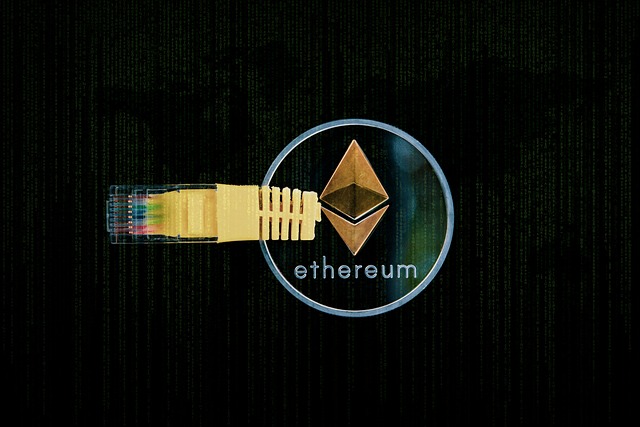Ethereum's unique economic model features a deflationary mechanism driven by its native cryptocurrency, Ether (ETH), with a finite supply of 1 billion tokens. As transaction fees burn ETH and the network expands, the overall supply decreases, making each unit rarer over time. This dynamic encourages long-term holding and investment, providing a hedge against traditional inflation. Deflation benefits Ethereum token holders through mechanisms like token burning and reduced block rewards, potentially driving up ETH value. Staking has evolved as a key mechanism, enhancing network security and offering substantial economic benefits for token holders. Ethereum's decentralized nature and deflationary mechanics offer attractive investment prospects for long-term holders, but pose risks related to liquidity, user adoption, and regulatory uncertainty. Future scenarios could include gradual burn rate adjustments or innovative DeFi lending/borrowing mechanisms, impacting ETH's supply and price dynamics.
“Unraveling the complex mechanics of deflation on Ethereum reveals a dynamic economic ecosystem with profound implications for token holders. This article delves into the unique aspects of Ethereum’s deflationary model, exploring its impact on investors and the underlying mechanisms driving value. From burning to staking, we dissect how these processes shape the Ethereum economy. We also analyze the strategic advantages for long-term holders and identify potential risks. By examining current trends, we offer insights into the future scenarios that may unfold as Ethereum’s deflationary landscape evolves.”
- Understanding Ethereum's Deflationary Model
- How Does Deflation Impact Token Holders?
- The Role of Burning Mechanisms in Ethereum
- Staking and Its Economic Benefits
- Exploring the Value Proposition for Long-Term Holders
- Potential Risks and Considerations
- Looking Ahead: Future Scenarios for Ethereum Deflation
Understanding Ethereum's Deflationary Model

Ethereum, as a blockchain platform, operates on a unique economic model that includes deflationary mechanics. Unlike traditional currencies, Ethereum’s native cryptocurrency, Ether (ETH), has a finite supply, with a maximum cap of 1 billion tokens. This scarcity is a key aspect of its deflationary nature. As the network grows and more users adopt it, transaction fees burn a portion of ETH, further reducing its overall supply.
This deflationary model has significant implications for holders. As the supply decreases over time, each unit of Ether becomes relatively rarer, potentially increasing its value. This dynamic encourages long-term holding and investment, as users may see their holdings appreciate in value. Additionally, the burning mechanism helps to control inflation, ensuring that Ethereum’s economy remains balanced and stable, which can be attractive for investors seeking a hedge against traditional inflationary currencies.
How Does Deflation Impact Token Holders?

Deflation, a concept where the overall price level of goods and services decreases over time, has significant implications for Ethereum token holders. When deflationary mechanics are at play, such as through the burning of tokens or a decreasing supply, the value of held assets can appreciate over time. This is particularly beneficial for long-term investors who acquire tokens when their supply is higher, as the reduced circulation later on may drive up prices.
In the context of Ethereum, deflationary mechanisms like the reduction in block rewards or token burning during transactions can contribute to a shrinking supply, potentially increasing the value of ETH over time. This dynamic encourages strategic holding and investment strategies for Ethereum owners, as they aim to capitalize on the potential appreciation of their holdings in response to deflationary pressures within the network.
The Role of Burning Mechanisms in Ethereum

In the world of Ethereum, burning mechanisms play a pivotal role in its deflationary economics, shaping the token’s long-term value and appeal. When a transaction occurs on the Ethereum network, a small fee is burned, meaning it’s permanently removed from circulation. This process, often referred to as “gas fees,” has been a game-changer for the platform. As these fees are in Ethereum tokens (ETH), their burning effectively reduces the overall supply of ETH in circulation, making it more scarce and potentially increasing its value over time.
This mechanism creates an intriguing dynamic for holders. As the supply decreases, each token’s relative worth could increase, providing a strong incentive to hold onto ETH. Moreover, the burning process is closely tied to the network’s security and transaction efficiency, as higher demand for Ethereum leads to more substantial gas fees and, consequently, faster burning of tokens. This symbiotic relationship ensures that Ethereum remains a robust and decentralized platform while offering economic benefits to its token holders.
Staking and Its Economic Benefits

In the Ethereum ecosystem, staking has emerged as a powerful mechanism that goes beyond simply securing the network. It offers significant economic advantages for token holders, creating a deflationary cycle that benefits the entire community. When individuals stake their ETH, they lock up their tokens to validate transactions and create new blocks on the blockchain. This process not only strengthens the network’s security but also rewards stakers with additional Ether for their participation.
The economic implications of staking are twofold. Firstly, it promotes a deflationary environment by reducing the supply of available ETH. As more users stake, the number of tokens in circulation decreases, potentially increasing their overall value. Secondly, staking encourages long-term investment and engagement within the Ethereum network, fostering a sense of community ownership and stability. This is particularly beneficial for holders who can earn passive income while contributing to the platform’s growth and sustainability.
Exploring the Value Proposition for Long-Term Holders

Ethereum, as a decentralized blockchain, introduces an innovative approach to digital assets and economics. For long-term holders, exploring the value proposition extends beyond mere price appreciation. The network’s deflationary mechanics play a pivotal role in this dynamic, offering unique advantages over traditional financial systems.
Holders of Ethereum tokens benefit from a reducing supply of ETH coins, which has potential implications for their investment. As the total supply decreases over time, it can lead to increased scarcity and, consequently, higher value. This deflationary pressure is a stark contrast to inflation in fiat currencies. Long-term holders who adopt a patient mindset can capitalize on this mechanism, expecting Ethereum’s value to grow as its limited supply becomes more precious.
Potential Risks and Considerations

While Ethereum’s deflationary mechanics offer compelling benefits, such as reduced token supply and potential appreciation over time, there are potential risks and considerations for holders to keep in mind. One significant concern is the impact on the network’s overall liquidity. As tokens are burned, the available supply decreases, which could lead to higher transaction costs and limited trading volumes, especially during periods of heightened market volatility. This dynamic might pose challenges for users looking to quickly convert their holdings into cash or participate in frequent trades.
Furthermore, the deflationary model relies on a steady stream of new users adopting Ethereum and its associated applications. A decrease in user participation or interest could result in reduced demand for ETH, potentially leading to lower prices. Additionally, regulatory uncertainty surrounding cryptocurrencies remains a factor that could influence investor sentiment and market stability. Holders should stay informed about evolving legal frameworks and be prepared for potential fluctuations in the market, as these external factors can significantly impact the long-term viability of their investments.
Looking Ahead: Future Scenarios for Ethereum Deflation

Looking ahead, several scenarios could shape Ethereum’s deflationary trajectory in the coming years. One potential outcome is a gradual burn rate adjustment, where the network reduces token supply at a steady pace, mimicking stablecoin models. This strategy could stabilize ETH’s price and create a more predictable economic environment for holders. As Ethereum transitions to proof-of-stake (PoS), this mechanism might become more refined, allowing for controlled and transparent deflationary processes.
Another future scenario involves the integration of decentralized finance (DeFi) protocols that employ innovative lending and borrowing mechanisms, potentially increasing demand for ETH while reducing its supply over time. DeFi’s dynamic nature could lead to unforeseen economic implications, creating a complex interplay between token supply, liquidity, and user behavior. As Ethereum continues to evolve, these future developments will shape the network’s deflationary mechanics, impacting investors’ strategies and long-term outlooks.
Ethereum’s deflationary mechanics, driven by burning mechanisms and staking, offer both advantages and risks for token holders. While long-term investors stand to gain from potential appreciation and staking rewards, dynamic market conditions and regulatory uncertainties should be closely monitored. As Ethereum continues to evolve, understanding these economic implications is crucial for navigating the future landscape of this pioneering blockchain.



